You have no items in your shopping basket.
Dr Richard Dune
02-05-2025
Did the real AI revolution in healthcare start a decade ago?
Image by DC_Studio via Envato Elements
Rethinking artificial intelligence in health and social care: The untold story of Clinical Decision Support Systems (CDSS)
As Artificial Intelligence (AI) continues to capture the imagination of the health and social care sector, with promises of predictive diagnostics, machine learning, and intelligent automation, there’s a risk that we overlook the foundation already laid. While AI dominates today’s headlines, the seeds of this revolution were sown long before Chatgpt, predictive analytics, or robotic triage tools came into the frame.
Over a decade ago, during his doctoral research, Dr Richard Dune examined how Clinical Decision Support Systems (CDSS) were being adopted in NHS settings. These early systems weren’t branded as AI. There were no neural networks or deep learning algorithms involved. However, they represented the first generation of digital tools incorporating intelligence into frontline care delivery.
And yet, despite their potential, their impact was mixed, at best.
The forgotten blueprint - What CDSS tried to achieve
CDSS were developed to translate clinical guidelines into decision trees and workflows. The logic was simple:
They digitised evidence-based care to improve decision-making at the point of care. In theory, the model was elegant. In practice, it was fragmented and frustrating.
Instead of being deployed strategically, where care variation was high or workforce confidence low, CDSS tools were often implemented indiscriminately across entire trusts, driven more by compliance and funding incentives than clinical need.
A case study from cardiology - When innovation doesn’t fit
During my time in cardiology, we saw CDSS systems introduced into already data-rich environments. These wards were equipped with advanced telemetry and monitoring systems. CDSS added another layer of complexity, often clashing with existing workflows and increasing the administrative burden.
The system was not inherently flawed - it simply lacked compatibility with the setting it was dropped into. The result? Frustration among staff, poor uptake, and a growing mistrust of digital interventions.
Lessons from the Diffusion of Innovations Theory
To understand this widespread inconsistency, I turned to Everett Rogers’ Diffusion of Innovations theory. It became the most useful lens for analysing the challenges of CDSS adoption.
Here’s how the five key factors played out:
- Relative advantage - Some departments (e.g., general medicine) saw real value, while others saw duplication or disruption.
- Compatibility - The best results came when the technology aligned with existing clinical practice.
- Complexity - Systems that appeared simple in design became burdensome due to poor integration and a lack of digital skills among staff.
- Trialability - Pilot projects showed promise, but assumptions that what worked in one setting would scale everywhere led to widespread disillusionment.
- Observability - Early success stories were visible but not interrogated. We didn’t ask why it worked in one unit and not in another.
The real barriers to AI adoption are not technological
CDSS didn’t underperform because the tech wasn’t good. They struggled because we misunderstood the systems into which we were introducing them.
The overlooked barriers included:
- Digital literacy gaps among healthcare workers
- Unequal departmental funding for tech support and implementation
- Poor interoperability between CDSS and existing systems
- Lack of senior leadership buy-in and change management strategies
- Cultural resistance and mistrust of automation.
In many cases, CDSS became nothing more than a tick-box exercise for audits. A tool built to improve care was relegated to a compliance checkbox - A tragic misuse of innovation capital.
Why this still matters in today’s AI hype cycle
Fast forward to 2025, and we’re having the same conversations with flashier language and more powerful tools. Generative AI, machine learning, and smart diagnostics are the latest buzzwords. But the same foundational issues remain unresolved:
- Can new technologies integrate with real-world workflows?
- Is the workforce trained, confident, and willing to use them?
- Do we have governance frameworks that balance innovation with risk?
- Are we measuring the right outcomes when assessing AI impact?
What’s missing in the AI discourse is a sober reflection on what we’ve already tried and failed to learn.
CDSS - Still the best gateway to scalable, responsible AI
While large language models and AI diagnostics continue to evolve, CDSS remains one of the most reliable ways to introduce scalable, regulated, and clinically valuable AI into health and social care systems.
Want to:
- Improve adherence to NICE guidelines?
- Reduce sepsis-related mortality?
- Boost medicines safety and vaccination uptake?
A well-designed CDSS - especially one that is AI-enabled, API-integrated, and cloud-based - can deliver measurable impact without overhauling entire systems.
Unlike some AI tools that are still in clinical trials, CDSS has already passed the thresholds of validation, governance, and professional acceptance in many settings.
Reframing innovation - It’s not about novelty, it’s about fit
Innovation in healthcare doesn’t mean chasing what’s new. It means investing in what works, scaling what fits, and adapting based on context. CDSS, if redesigned with today’s interoperability standards, user experience insights, and evidence-based guidance, can serve as a practical, ethical, and effective on-ramp to the broader use of AI.
As we move forward, we must remember:
“Innovation isn’t about replacing the old - it’s about understanding it.”
CDSS offered a warning. AI innovators ignore it at their peril.
Want to scale AI in a way that actually works?
At The Mandatory Training Group, we’re not only watching the evolution of AI in healthcare - we’re shaping it. Through our ComplyPlus™ platform, we support organisations to:
- Embed evidence-based systems like CDSS into operational workflows
- Train staff with CPD-accredited statutory and mandatory training packages
- Ensure compliance with evolving CQC, NICE, and NHS frameworks
- Monitor performance and governance through real-time dashboards.
Let’s stop repeating past mistakes. Let’s build AI adoption strategies that work - not just in theory, but in practice.
About the author
Dr Richard Dune
With over 25 years of experience, Dr Richard Dune has a rich background in the NHS, the private sector, academia, and research settings. His forte lies in clinical R&D, advancing healthcare tech, workforce development, and governance. His leadership ensures that regulatory compliance and innovation align seamlessly.

Related blog articles
View allContact us
Complete the form below to start your ComplyPlusTM trial and transform your regulatory compliance solutions.







